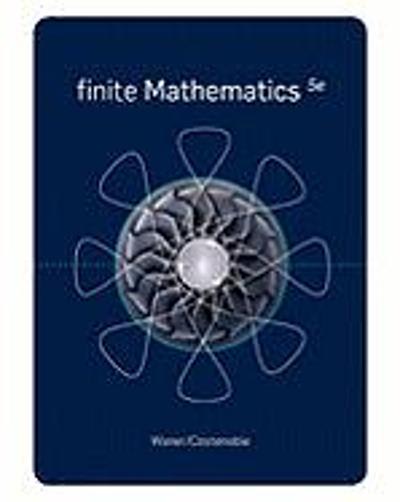Question
1. Researchers studied 208 infants whose brains were temporarily deprived of oxygen due to complications at birth. When researchers detected oxygen deprivation, they randomly assigned
1. Researchers studied 208 infants whose brains were temporarily deprived of oxygen due to complications at birth. When researchers detected oxygen deprivation, they randomly assigned babies to either usual care or to a whole-body cooling group. The goal was to see whether reducing body temperature for three days after birth increased the rate of survival without brain damage.
Which of the following is used in the design of this experiment? Check all that apply.
- Random assignment
- Double blinding
- Control group
2. What is the response variable?
- Infants whose brains are temporarily deprived of oxygen
- Usual care or whole-body cooling
- Survival without brain damage
3. The Hawthorne Works was a large Western Electric factory with 45,000 employees. During the 1920s and 1930s, Hawthorne Works was the site of some well-known industrial studies. In one of the studies, researchers investigated the impact of different working conditions on worker productivity. Prior to the start of the study, researchers secretly measured workers' productivity for several weeks. Then researchers chose two workers, who then chose their own teams. The teams were separated from the general workforce and completed their work in different experiment rooms where the researchers could observe them more easily. Over a 5-year period researchers manipulated the structure of the workday for each team (number and duration of breaks and number of hours per shift). For each of these changes in working conditions, the researchers measured the effect on productivity. For some conditions, such as frequent short breaks, workers rebelled by intentionally decreasing productivity.
Why did the researchers secretly measure the workers' productivity before creating the two treatment groups?
- To create similar treatment groups so that a cause-and-effect relationship could be established
- To provide a baseline for measuring worker productivity
- To directly control for confounding variables
4. The math department recently purchased new learning software for their freshman math classes. The instructors want to use the learning software instead of a textbook. So they decide to study the effectiveness of the software. First they test the skills and concept mastery for a number of the freshman math students. Then they randomly divide the students into two groups. One group uses the learning software for a particular lesson and the other group uses the regular textbook. Then the instructors retest all of the students and compare the improvement in the skills and concept mastery for the two groups.
What is the purpose of random assignment in this experiment? Check all that apply.
- To produce treatment groups with similar characteristics
- To avoid bias
- To generalize the experiment results to all freshman math students
- To control for confounding variables
Step by Step Solution
There are 3 Steps involved in it
Step: 1

Get Instant Access to Expert-Tailored Solutions
See step-by-step solutions with expert insights and AI powered tools for academic success
Step: 2

Step: 3

Ace Your Homework with AI
Get the answers you need in no time with our AI-driven, step-by-step assistance
Get Started


